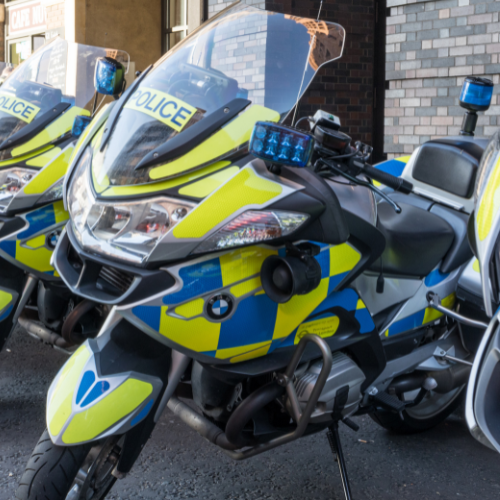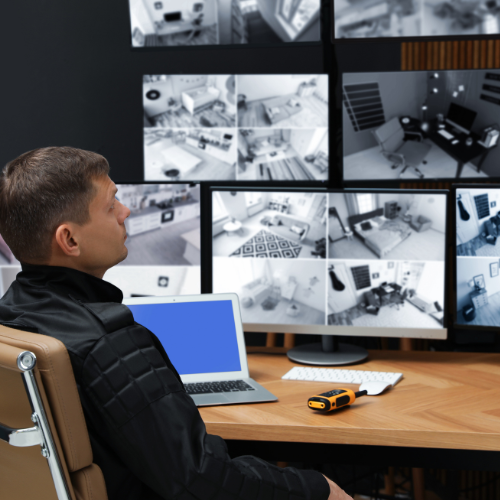Introduction:
In recent years, the integration of technology into law enforcement practices has sparked significant debate and discussion. Among the most notable advancements is the use of body cameras, which aim to increase accountability, transparency, and trust between police forces and the communities they serve. This article delves into the implications of equipping police officers with cameras attached to their bodies, bikes, and cars, exploring case studies of successful implementations, the role of technology in combating drug related issues, and strategies for nurturing professional relationships with communities.
The Rationale Behind Body Cameras in policing.
The implementation of body cameras in policing has emerged as a response to public outcry over police misconduct and growing concerns about transparency in law enforcement. These devices serve as a tool for documenting interactions between officers and civilians, ensuring accountability and deterring potential misconduct. The use of cameras can also help resolve disputes and provide critical evidence in investigations.

Case Studies of Successful Police Camera Implementations.
1. Los Angeles Police Department. (LAPD)
In 2015, the LAPD initiated a body worn camera program aimed at enhancing transparency and accountability. A study conducted by the RAND Corporation indicated a 17% reduction in use of force incidents and a significant decrease in complaints against officers. The community response was overwhelmingly positive, as residents felt more secure knowing their interactions with law enforcement were being recorded.
2. Newark Police Department.
The Newark Police Department in New Jersey adopted body cameras as part of its broader strategy to rebuild trust with the community following years of strained relations. The program not only improved officer conduct but also fostered stronger community ties. Officers reported that the cameras helped them engage more positively with residents, leading to increased cooperation in drug related investigations.
3. Metropolitan Police Service, London.
The Metropolitan Police Service implemented a similar program in 2013. The initiative led to a significant increase in public confidence. With over 1,000 officers equipped with body cameras, the department reported a decrease in complaints and a rise in public satisfaction. The cameras also played a pivotal role in drug related enforcement, as footage provided critical evidence for prosecutions.
Addressing Drug Problems Through Technology.
The rise of drug related crime poses a complex challenge for law enforcement agencies worldwide. Body cameras can play a crucial role in addressing these issues by improving evidence collection and fostering community partnerships.
1. Community Engagement.
Building professional relationships with communities is essential in tackling drug problems. Police departments that actively engage with residents can gather valuable intelligence on drug activities. Body cameras enhance these interactions by ensuring that officers conduct themselves professionally, thereby fostering trust and openness.
2. Evidence Collection.
Cameras provide an objective record of drug related incidents, aiding in the prosecution of offenders. In many cases, footage can corroborate officer reports, making it easier to secure convictions. This technological support can be particularly crucial in communities where drug trafficking is prevalent, as it empowers law enforcement to act decisively.
Strategies for Effective Community Engagement.
1. Transparency and Communication.
Open lines of communication between police and community members are vital. Regular community meetings, workshops, and forums can help build trust. Officers should be encouraged to share their experiences and listen to the concerns of residents.
2. Community Policing Initiatives.
Implementing community policing strategies can further enhance relationships. Officers should be assigned to specific neighborhoods, allowing them to build rapport with residents. This familiarity can lead to increased cooperation in reporting drug related activities.
3. Education and Outreach Programs.
Police departments can establish educational programs that inform residents about the dangers of drug abuse and available resources for help. By positioning themselves as allies in the fight against drugs, officers can foster a sense of partnership within the community.
The Importance of Professional Relationships.
A focus on professional relationships with communities, as opposed to harsh treatments, is essential in modern policing. Officers who engage positively with residents are more likely to gain their trust and cooperation. Body cameras can facilitate this, as they provide a record of positive interactions and help dispel negative perceptions of law enforcement.

The Role of Technology in Modern Policing.
The inclusion of cameras attached to bikes and cars can enhance the effectiveness of policing efforts. Officers on bikes can cover more ground in urban areas, and cameras mounted on patrol vehicles can capture vital evidence during traffic stops and pursuits. This multi faceted approach to surveillance not only improves officer safety but also bolsters community confidence in law enforcement.
Conclusion.
The integration of body cameras into policing practices represents a significant step towards greater transparency, accountability, and community engagement. As demonstrated by various case studies, these devices have the potential to improve police conduct, foster trust with residents, and aid in combating drug related issues. By prioritizing professional relationships and utilizing technology effectively, police forces can create safer communities for all. If it weren’t for the police body cam below, this individual in the car could have fabricated a different account of the incident.
Questions and Answers.
1. How do body cameras improve police accountability?Body cameras provide an objective record of police interactions, helping to ensure that officers are held accountable for their actions. This footage can be used in investigations and can deter potential misconduct.
2. What impact do body cameras have on community trust?The presence of body cameras can enhance community trust by promoting transparency and demonstrating that police officers are committed to professional conduct during interactions with residents.
3. How can police engage effectively with communities regarding drug issues?Police can engage effectively through community meetings, educational outreach programs, and by building relationships with residents to create a collaborative approach to addressing drug related problems.
4. What are the benefits of using cameras on bikes and patrol cars?Cameras on bikes and patrol cars provide additional surveillance capabilities, improve evidence collection, enhance officer safety, and can capture incidents that occur in various environments, increasing overall situational awareness.
5. How can police departments ensure the successful implementation of body camera programs?To ensure success, police departments should provide adequate training for officers, establish clear policies for camera usage, engage with communities to address concerns, and continuously evaluate the program’s effectiveness.
